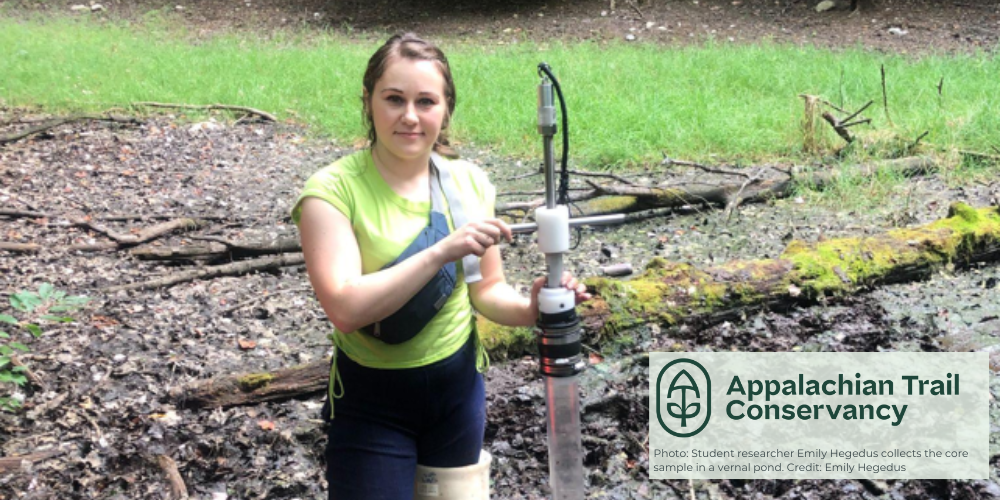
Amphibians are all around us and are often found in unexpected places like vernal pools!
Some great examples of vernal pools are found in natural and wild lands in State Forests. Recent student research by Emily Hegedus and advisor Dr. Paul Marr at the Department of Geography-Earth Science, Shippensburg University, studied a vernal pool Natural Area in Michaux State Forest, home of several dozen vernal pools. The surrounding landscape is also dotted with these seasonally inundated wetlands, and several paleoecological studies have been performed. This study added to what we know through previous pollen analysis and radiocarbon dating of sediments in vernal pools there. The research sought to determine the origin of these pools and how the vernal pool and the forest around it changed before and after mass deforestation in the 1800s.
One core, going down 34 inches, was collected from the center of a particular vernal pond. This depth is considered an adequate depth to study changes in pollen before and after the early colonial period and to determine whether or not the pond was of natural origin or a relic of the iron ore industry. The core was analyzed at the United States Geological Survey Florence Bascom Geoscience Center. The center’s lab took 43 samples from the sediment core. A sample at the bottom and middle of the core were radiocarbon dated to determine age.
The results suggest that these vernal pools are likely to be natural and not created by human activity and the forest composition was dominance by oaks and pines, followed by hickory, maples, birches, and chestnut. The study states that the vernal pools were likely perennial (permanent rather than seasonal) prior to the widespread deforestation in the 1800s. The presence of water lily pollen prior to the 1800s shows that the lily would have been able to be submerged, floating. The rate of sedimentation dramatically increased in the core sample after the time of deforestation. This is important because other vernal pools – and those throughout the Kittatinny Ridge – could have also been perennial ponds that supported larger and more varied forms of wildlife! The results have the potential to impact the fields of wetland restoration and forest management. The project report states that it may be worth considering restoring some of these vernal pools to their original perennial state in order to diversify wetland habitats.